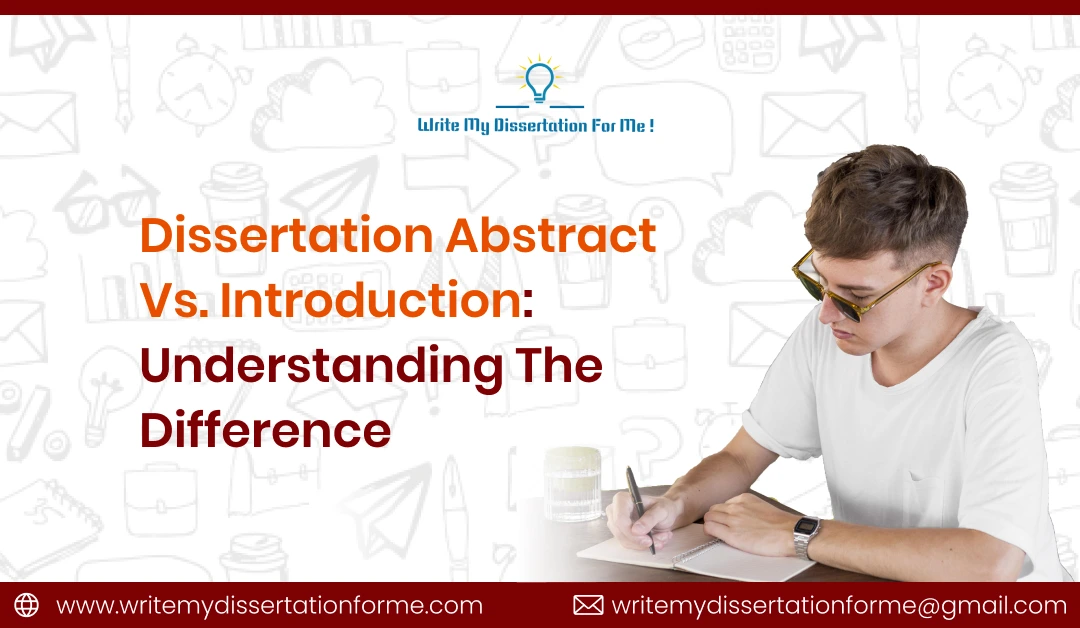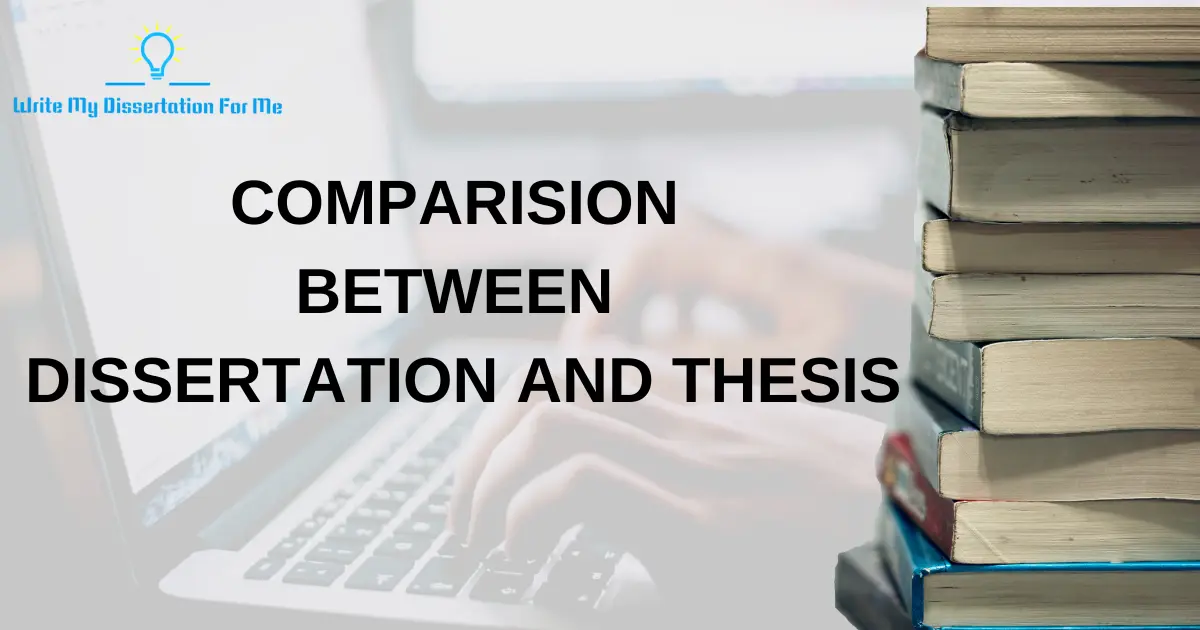Dissertation Abstract vs Introduction: Understanding the Difference
November 20 2024 | 04 min read

The dissertation procedure can be difficult, especially when attempting to distinguish between various components, such as the abstract and introduction. Both play important roles in establishing the context for your research, but they are not interchangeable. Understanding these distinctions ensures clarity and professionalism, allowing you to create a dissertation that fulfills academic standards.
This article examines the distinctions between a dissertation abstract and an introduction, dives into their respective functions, and provides recommendations for writing each section well.
What is the Dissertation Abstract?
The abstract is a succinct synopsis of your dissertation, giving readers an overview of your research aims, methodology, major findings, and conclusions. It is often written after completing the dissertation and appears immediately below the title page.
Purpose of an Abstract:
The primary objective of an abstract is to provide potential readers with a brief outline of your research. It allows them to assess whether your dissertation is relevant to their interests or research needs. The abstract is particularly important for indexing in academic databases, as it serves as a portal to your work.
Characteristics of a Dissertation Abstract:
- Abstracts range from 150 to 300 words, depending on your institution's criteria.
- Comprehensive Coverage: Despite its brevity, the abstract should incorporate your study objective, methods, main findings, and conclusion.
- Neutral Tone: Avoid using evaluative language in the abstract; it is intended to summarize rather than condemn your work.
- No Citations: Because the abstract is a solo overview, there should be no references or citations.
Tips for Writing an Effective Abstract:
- Be precise: Use straightforward and succinct language to convey your study, avoiding superfluous jargon.
- Follow the structure: Begin with the research problem, then go to techniques, provide findings, then conclude with implications.
- Focus on key findings: Highlight the aspects of your research that make it distinctive and valuable.
What is the Dissertation Introduction?
Unlike the abstract, the introduction serves as a gateway to the essential body of your dissertation. It sets the research environment, discusses its significance, and describes the format of your dissertation.
The purpose of an introduction:
The introduction orients the reader to your research by providing background information, describing the research challenge, and outlining your aims. It establishes the tone for the remainder of the dissertation and prepares the reader for what will happen next.
Characteristics of a dissertation Introduction:
- Detailed Overview: The introduction is often lengthier than the abstract, sometimes covering multiple pages.
- Contextual Information: It places your findings inside a larger academic framework.
- Engaging Beginning: A strong opening piques the reader's interest, often with interesting questions, figures, or anecdotes.
- Research Objectives and Questions: Clearly explain your research goals, objectives, hypotheses, or questions.
Tips for Writing an Effective Introduction:
- Hook the reader: Begin with an intriguing question, fact, or insight to pique your curiosity.
- Establish the research gap: Explain why your research is vital and how it contributes to the field.
- Provide clear objectives: Clearly explain your research objectives and the questions you hope to solve.
- Outline the structure: Provide a brief synopsis of what each chapter of your dissertation covers.
Key Differences Between Abstract and Introduction
| Aspect | Abstract | Introduction |
|---|---|---|
| Length | 150 - 300 words | Several Pages |
| Purpose | Summarizes the entire dissertation | Introduces the topic and research context |
| Content | Focuses on objectives, methods, findings, and conclusions | Provides background, significance, and research questions |
| Timing | Written after completing the dissertation | Written at the beginning of the dissertation process |
| Placement | Appears after the title page | Appears at the start of the dissertation |
Why the Difference Matters
Understanding the distinction between the abstract and introduction is crucial for maintaining academic rigor. Confusing the two can lead to a disorganized dissertation that fails to meet institutional guidelines.
For instance, if the abstract is too detailed, it defeats its purpose as a concise summary. Conversely, if the introduction lacks depth, it may fail to engage readers or provide sufficient context for your research.
Common Challenges and Ways to Overcome Them:
Challenge 1: Overlapping topics Students often struggle to discriminate between abstract and introduction topics, resulting in repetition.
Solution: Use the abstract as a standalone overview, and the introduction as a thorough entry point.
Challenge 2: A lack of clarity: Both sections demand accuracy, but using unclear wording can reduce their impact.
Solution: Use plain, short language with no superfluous jargon or filler words.
Challenge 3: Timing: Some students attempt to write the abstract before completing their dissertation, resulting in insufficient summaries.
Solution: Write the abstract once you have completed all other sections of your dissertation.
The Role of Dissertation Writing Services:
Writing a dissertation requires a thorough comprehension of academic standards, and the abstract and introduction are no exception. If you're feeling overwhelmed, obtaining expert help can be a game changer. Dissertation Writing Services offer expert help to guarantee that every portion of your dissertation meets the highest requirements.
These services can help you clarify your research goals, improve your introduction, and write a compelling abstract that reflects the essence of your study. Whether you're asking, Can someone write my dissertation introduction? or need help editing your abstract, expert assistance can make the process go smoothly.
Conclusion:
The dissertation abstract and introduction play separate but complementary roles in academic study. While the abstract serves as a summary, the introduction establishes the framework for your research. Understanding these differences and carefully constructing each component allows you to build a dissertation that resonates with readers while maintaining academic integrity.
Putting time and effort into these sections not only improves the quality of your dissertation but it also demonstrates your experience and dedication as a researcher. If necessary, seek expert assistance to improve your work and attain your academic objectives.
If you loved reading this, please share this,
also read

How to Highlight the Gap in Research in Your Dissertation Introduction
A dissertation's beginning establishes the tone for the whole scholarly work. In addition to introducing the topic, it highli...

The Benefits of Hiring Assistance for Your Finance Dissertation
Are you a finance student finding it difficult to complete the arduous assignment of writing your dissertation? Does the ques...

Comparison Between Dissertation And Thesis
There are plenty of differences between an idea and a dissertation. That means each dissertation and thesis writing...